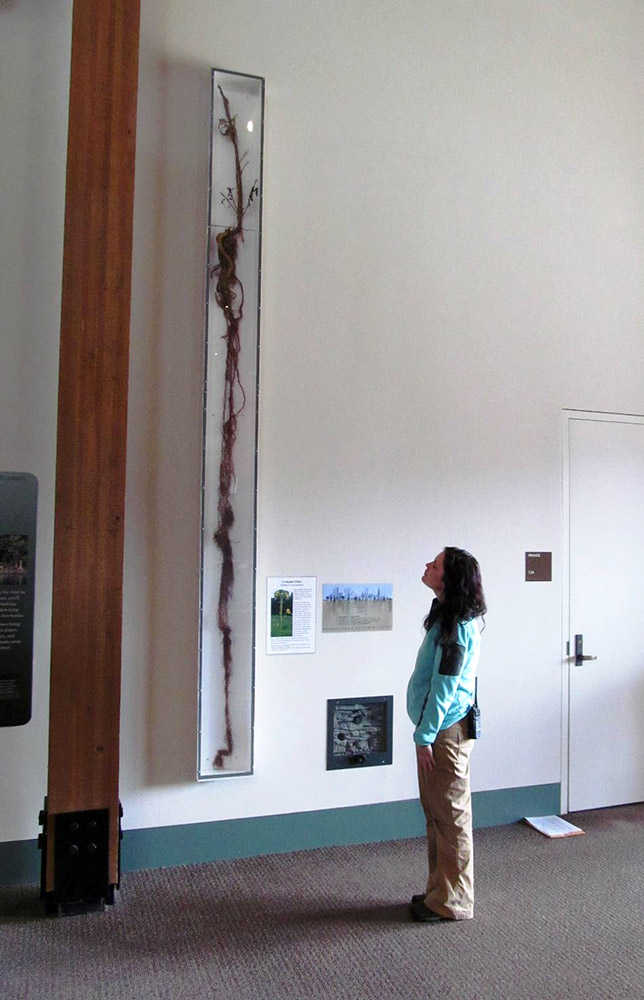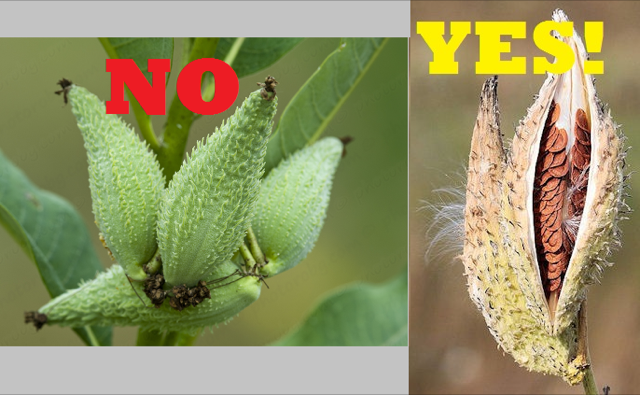The Ohio Pollinator Habitat Initiative, in cooperation with Delaware SWCD, invites Monarch butterfly lovers to participate in our annual Milkweed Roundup. Please collect only common milkweed and drop off your mature pods at our office through October 30th, 2020.
Make sure that…
- Pods are dry and gray/light brown in color (the pod’s center seam splits open with gentle pressure);
- Pods are placed in a paper bag or sack (not plastic grocery bags) to avoid moisture build-up and molds forming;
- The sack of pods is labeled with the location and date of the collection;
- A rubber band is gently placed around an opening pod (to keep seeds from escaping);
- Under ripe, green pods are not picked, as the seed is immature and not viable.
The Delaware SWCD recently established a pollinator garden at the Natural Resources Area at the Delaware County Fair. Several species of milkweed can be observed there, as well as other pollinator-friendly plants, such as compass plant. While these new plants are small in size above the ground, their roots are rapidly expanding below ground. Not only do these plants provide food for our important pollinators, their massive root systems anchor soils, decreasing erosion and preserving water quality. So, how massive are the roots of some pollinator or prairie plants? See for yourself!

